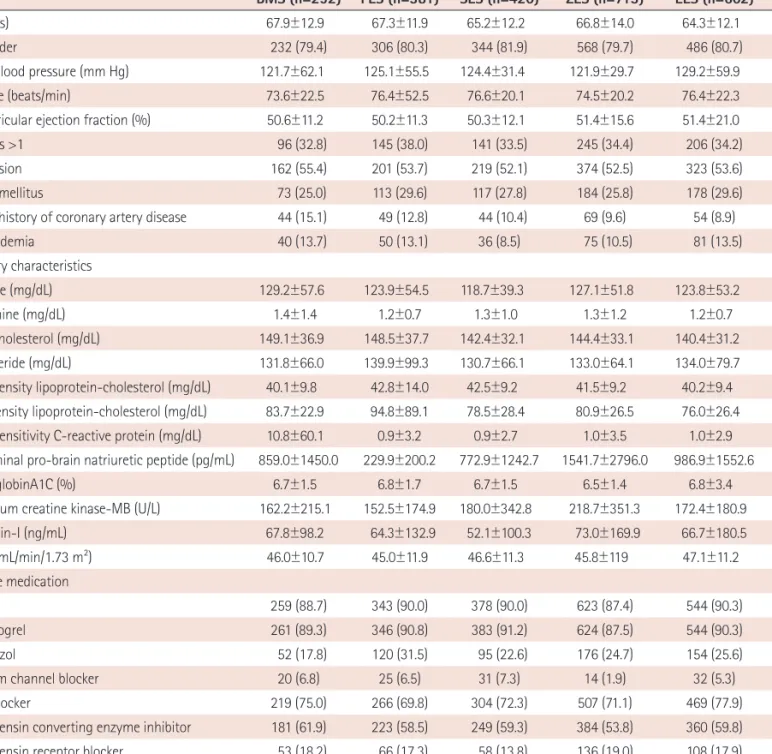Korean Circulation Journal
Introduction
Patients with chronic kidney disease (CKD) present with acceler- ated atherosclerosis and higher rates of cardiovascular morbidity and mortality.
1-3)Furthermore, CKD is associated with adverse out- come following percutaneous coronary intervention (PCI),
4)5)which is
Print ISSN 1738-5520 • On-line ISSN 1738-5555
Coronary Stents in Patients with ST-Elevation Myocardial Infarction and Chronic Kidney Disease Undergoing Primary Percutaneous Coronary Intervention
Khurshid Ahmed, MD 1,2 , Myung Ho Jeong, MD 1 , Rabin Chakraborty, MD 2 , Sumera Ahmed, MHM 2 , Young Joon Hong, MD 1 , Doo Sun Sim, MD 1 , Keun Ho Park, MD 1 , Ju Han Kim, MD 1 , Youngkeun Ahn, MD 1 , Jung Chaee Kang, MD 1 , Myeong Chan Cho, MD 3 , Chong Jin Kim, MD 4 , Young Jo Kim, MD 5 , and
Other Korea Acute Myocardial Infarction Registry Investigators
1
The Heart Center of Chonnam National University Hospital, Chonnam National University Research Institute of Medical Sciences, Gwangju, Korea
2
Apollo Gleneagles Hospital, Kolkata, India,
3Department of Internal Medicine, Chungbuk National University Hospital, Chungju,
4

